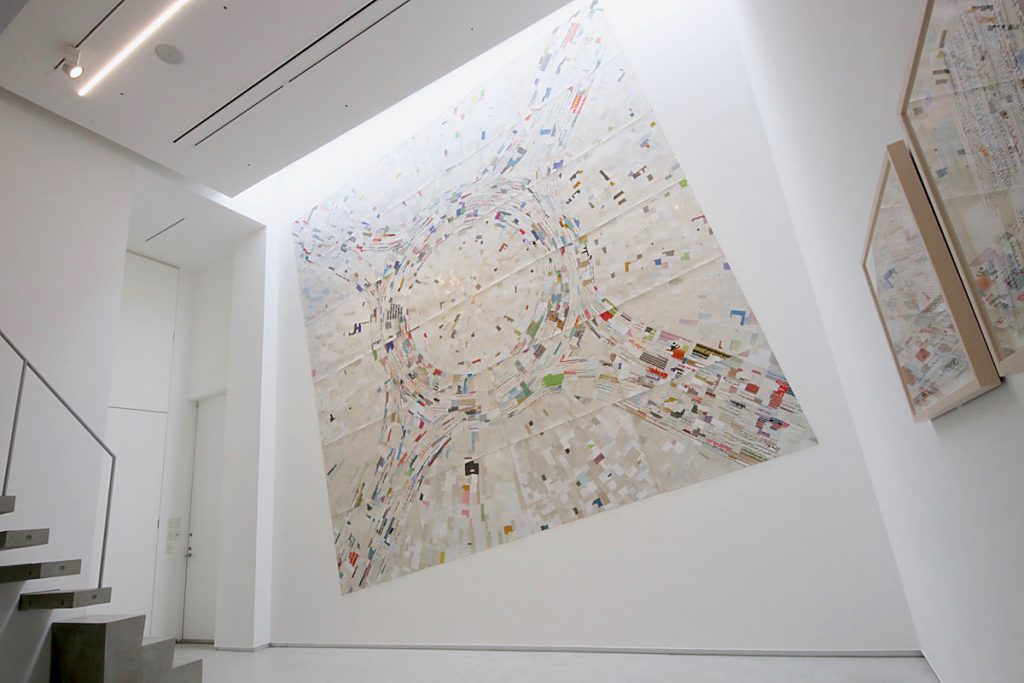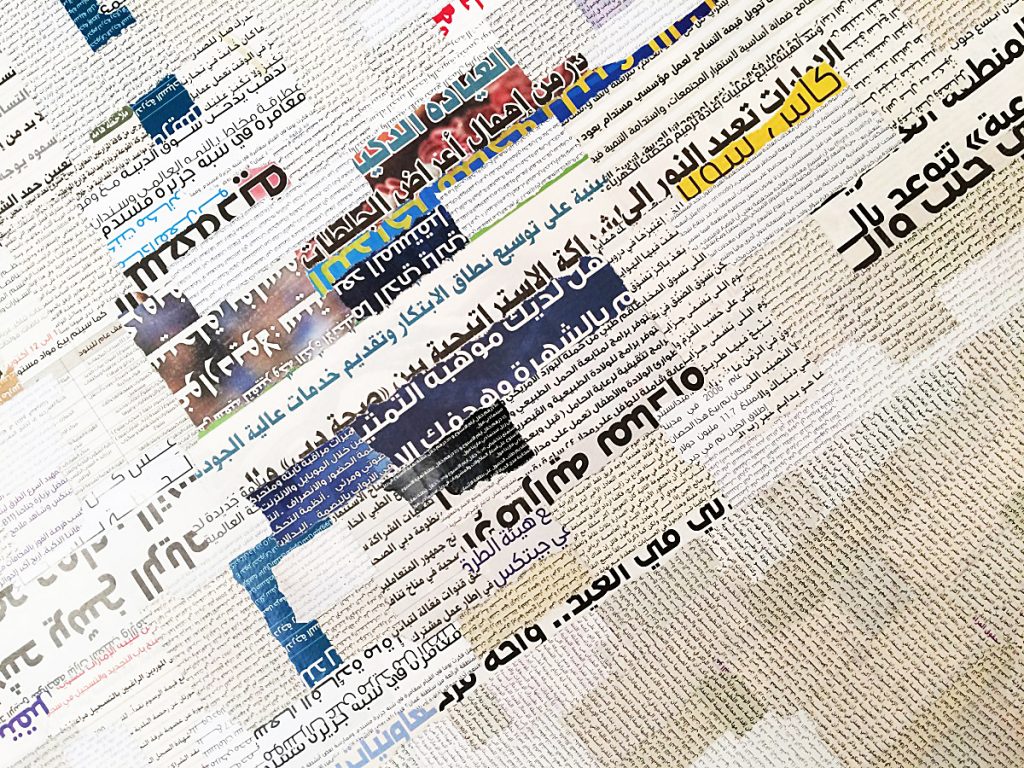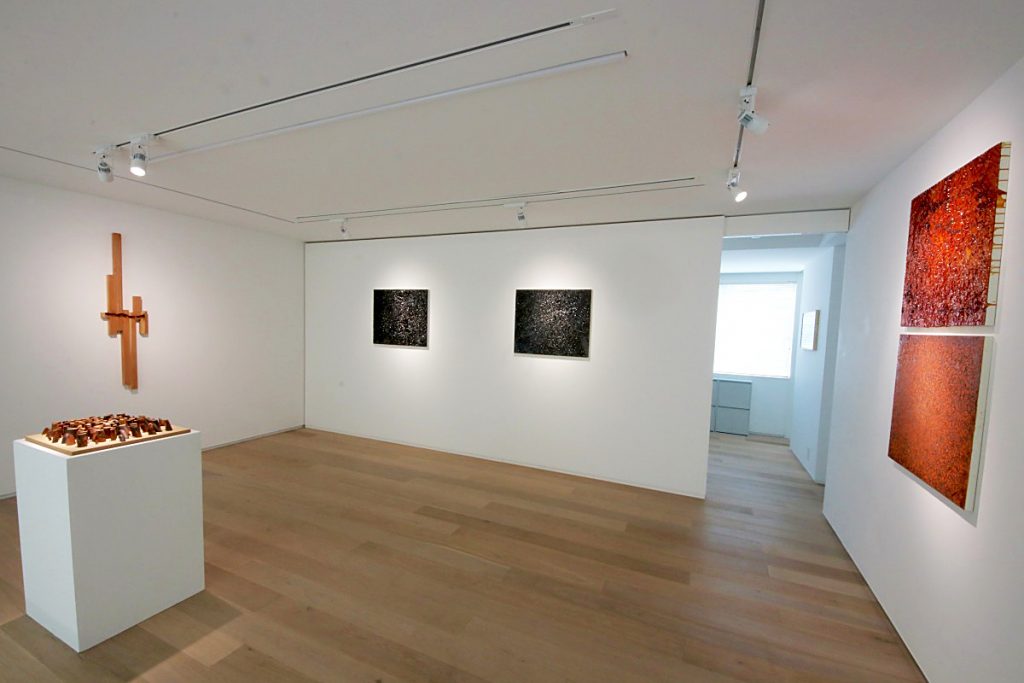EXHIBITIONS
Yuuki TSUKIYAMA “roundabout”
- Information
- Works
- DATE
- 2017-02-17 [Fri] - 2020-03-18 [Wed]
- OPEN TIME
- 11:00 - 19:00
- CLOSE DAY
- 日・月・祝
The sculptor Yuuki Tsukiyama spent three months in Dubai, the United Arab Emirates in 2016 participating in the residence programme ‘See Saw Seeds’. Fourteen artists and researchers from four countries participated in this programme.
The exhibition ‘roundabout’ is the first in Japan to display the large-scale collage work that was executed and exhibited there as the result of the program.
The title of this exhibition refers to a type of circular intersection without a traffic light that is common in Europe and the Middle East. Tsukiyama depicted the image of a roundabout with Arabic text taken from local newspapers and magazines, propping it on a support of over four metres in height. The roundabout, where cars flow in and out, overlaps with the image of Dubai as a prosperous hub in the Middle East and its active exchanges. However, the Arabic text printed on the thousands of pieces of paper that compose the image is incomprehensible for those who do not understand the language. It makes us imagine the current state of the world, where the rapid progress of globalisation without mutual understanding is leading to serious confrontations between ethnic groups and religions. Simultaneously, the overwhelming, large image crafted by steady handiwork and its bright colour tones induce a positive energy that disassociates the feeling of despair brought about by communication breakdown. Through his experiences of being surrounded by the unfamiliar Arabic language while stuck at a roundabout in Dubai, Tsukiyama became strongly aware of his existence in a different culture and under different rules. To overcome his alienation and feeling of helplessness in Dubai, he resorted to a form of prayer through his craft: he relied purely on handiwork to produce his work, without using even common tools such as scissors.
Yuuki Tsukiyama (b. 1976) studied sculpture at the Kyoto University of Art and Design and is based in Kobe, his place of birth. He uses a wide range of materials, such as metal, resin, wood and paint, but the starting point of his production is always the material itself. He calls his method of creation ‘play’—it involves finding the characteristics of the material through repeated trials. It is part of the theme of his works, together with the enormous amount of handiwork that they require. In recent years, he has expanded his expressive range, creating an installation that uses the exhibition space itself as the material and synergistically applying the use of other materials.
[Reception]2.17 fri 18:00-








